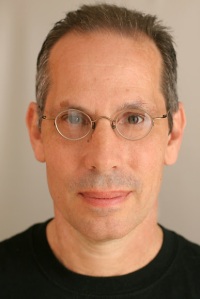Instructor Q&A: Brian Yansky
“We read fiction to see characters struggle and overcome or fail to overcome the conflict in their stories.”-Brian Yanksy
Brian Yansky is teaching a class for the Writers’ League of Texas called “Developing Conflict in Fiction” on May 27 at St. Edward’s University in Austin, TX. The class will identify and discuss different kinds of conflict and how to use them in novels and stories. Read the interview below and visit the class page to learn more.

Scribe: First off, why is it important to develop conflict?
Brian Yansky: Conflict is at the heart of all fiction. It develops characters, propels plot, and makes setting relevant. We read fiction to see characters struggle and overcome or fail to overcome the conflict in their stories. From a writer’s POV, creating conflict within your characters and between your main character, other characters, or perhaps society or nature or any number of other possibilities builds narrative. You’ve got to have conflict.
Scribe: Do you find that characters are developed with a specific conflict in mind, or do conflicts form based on the characters?
BY: Both. For me, usually, I start with a character and a situation. The situation has to have the potential for conflict in it. The character wants/needs something, and something gets in the way of her want/need. This is one way to build a central conflict for the character. However, as the character develops, other conflicts will occur to the writer. It’s a process. The character creates conflicts by her actions in trying to deal with problems and conflicts.
Scribe: Are there any specific tips you rely on to generate conflict within stories?
BY: The big tip is to start with a character in a situation that will create conflict from the inception of the story. But beyond that it depends on the story. A character in conflict with society— for example, Hunger Games, 1984, To Kill a Mockingbird – will find conflict everywhere because they’re struggling against something large and powerful. Just generally, I look for friction inside a character, between characters, or between a character and setting or a character and plot. Developing this friction will develop conflict, which will develop character and plot. That’s why conflict is so essential. It helps the writer build her story.
Scribe: Have you noticed any trends of less-common conflicts emerging in contemporary fiction?
BY: It should be pretty clear that I think conflict is in just about every story. Whatever the new trend is, it will have conflict and writers will find creative ways to make the conflict different and unique.
A trend that’s been done many different ways is “end of the world” stories. The setting creates immediate conflict in these stories. There’s conflict between survivors and other survivors, or those pesky walking dead or a world consumed by nuclear winter, or aliens, or gods. One of my favorites in this kind of story in recent years is Station Eleven. If you’re looking for a good “end of the world” story, check that one out.